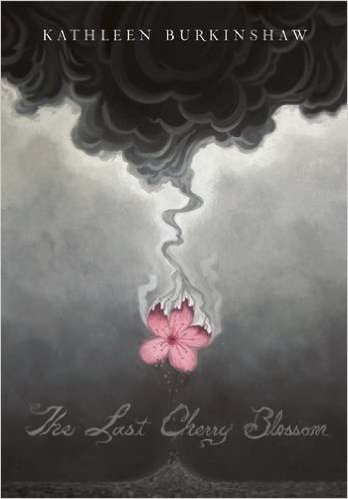 “THE LAST CHERRY BLOSSOM,” by Kathleen Burkinshaw, Sky Pony Press, Aug. 2, 2016, Hardcover, $16.99 (ages 11 and up)
“THE LAST CHERRY BLOSSOM,” by Kathleen Burkinshaw, Sky Pony Press, Aug. 2, 2016, Hardcover, $16.99 (ages 11 and up)
We often get so caught up in our own history, we fail to see that of the other side, particularly that of innocent victims. “The Last Cherry Blossom” transports readers to Hiroshima during World War II.
Yuriko lives in Hiroshima with Papa. Things are happy and uncomplicated until her aunt Kimiko and cousin Genji come to live with them. Genji can seemingly do no wrong, and Yuriko can’t stand her aunt’s rules. Now Aunt Kimiko is getting remarried and Papa is, too. If that wasn’t bad enough, WWII is dragging on, and Japan’s future isn’t as clear as authorities would like people to know.
As a newspaper editor, Papa has access to information hidden from the general public. While Yuriko is used to the sirens and air raid drills, she’s not used to losing people she knows. The war becomes much more real as neighbors who left to fight never return and her best friend is forced to work at a plane factory. Just when Yuriko thinks the worst is passed, the atomic bomb hits Hiroshima and everything changes.
At first, “The Last Cherry Blossom” is a little hard to read. Not because of the impending horrors, but because it takes a little while to get used to the Japanese culture/names/language. After a chapter or two, those issues disappear, and you become immersed in Yuriko’s story.
Though “The Last Cherry Blossom” is a piece of fiction, author Kathleen Burkinshaw based her novel on her own mother’s experiences growing up in Hiroshima during WWII. Burkinshaw does an excellent job of setting the scene. Pre-bomb Hiroshima is elegant and beautiful. The people are mostly regular folk, going about their daily business and spending time with their families. Readers will easily identify with Yuriko and might find themselves wondering about other victims of more recent atrocities.
As you read “The Last Cherry Blossom” you know something bad is coming. As an adult who studied history in college, I have a greater knowledge of what happened. Younger readers, however, might find themselves surprised and rightfully horrified at what happened when the atomic bomb hit. It’s not through an adult’s eyes that you witness the devastation but through a 12-year-old’s. Somehow that makes the events worse. Not because Burkinshaw is overly graphic, but because you can’t help but wonder who could do such a thing to other humans.
“The Last Cherry Blossom” is a beautiful and haunting novel about our not-too-distant past. I highly recommend it.

1 Comment
Jessica, Thank you so very much for your kind words in your review of THE LAST CHERRY BLOSSOM. I’m touched that my mother’s story resonated with you. I’m grateful that I can tell my mother’s story and hopefully readers will realize what my mother’s hope was-nuclear weapons should never be used again.